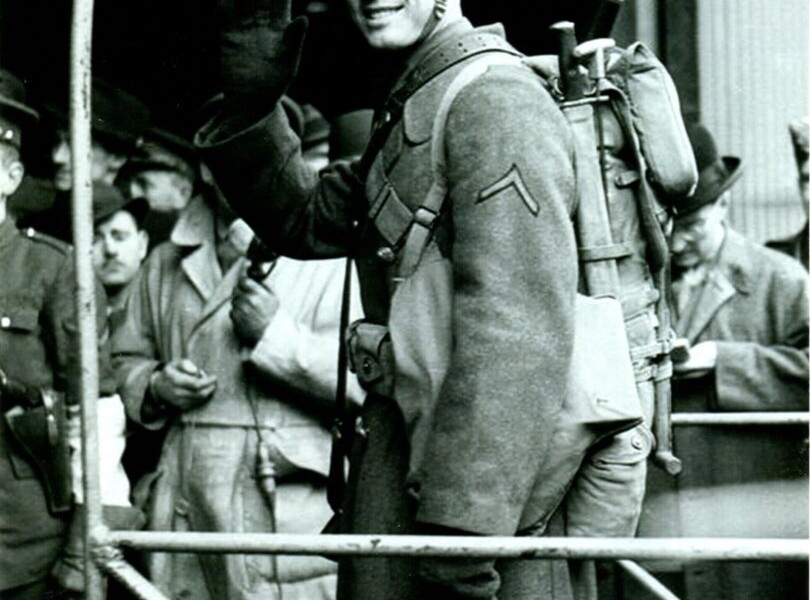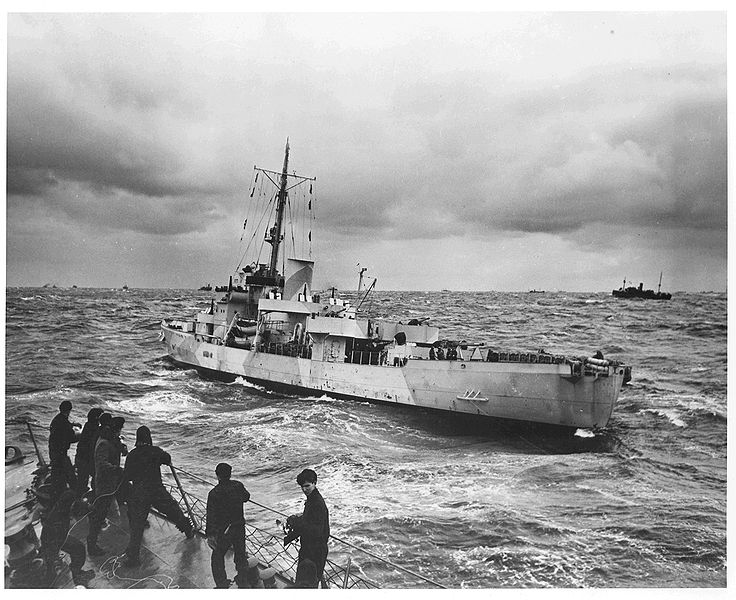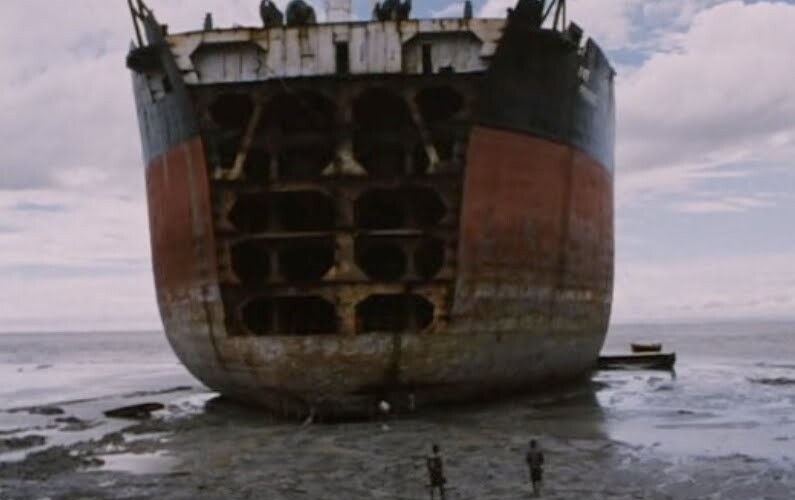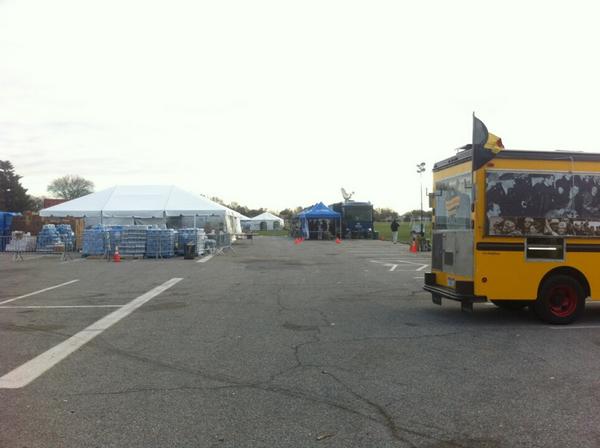On January 15, 1942, ships of convoy AT-10 left the Brooklyn Army Terminal to make the journey across the Atlantic. Aboard the transports USS Chateau Thierry and HMTS Strathaird were mostly soldiers of the 34th Infantry Division, aka “Red Bull,” 4,058 in all. Codenamed Operation Magnet, this was the first deployment of American combat troops to foreign soil after the US officially entered World War II.
But the plans for this operation were laid long before. In April 1941, the War Department created War Plan Rainbow Five, which would be the basis for American strategy throughout the war. This plan called for the immediate deployment of 44,000 troops to the British Isles, which would be used as a the principal American base of operations in Europe. Following the Arcadia Conference, held in Washington beginning on December 22 and attended by Winston Churchill and President Roosevelt, American and British military planners decided that the main base for US forces, at least initially, would be in Northern Ireland. This garrison would free up local forces for operations in the Middle East (where German and Italian forces were pushing into Egypt) and Southeast Asia (where the Japanese had invaded British Malaya), and provide protection for naval, air, and anti-aircraft bases.
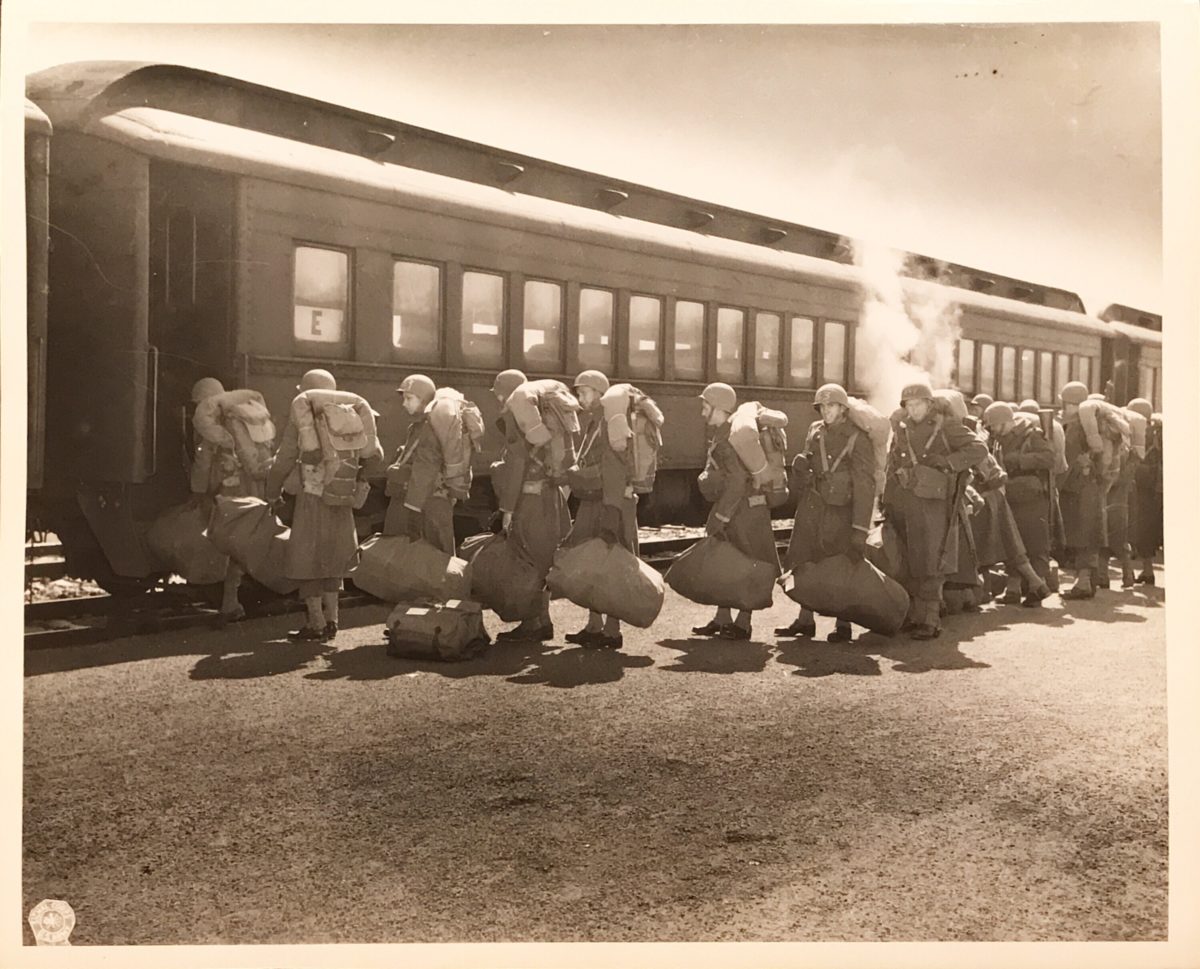
Though months in the making, the plans for the actual deployment were hastily arranged. Though the plan called for 44,000 troops, this was reduced to 14,000, then just 4,000, as there was a shortage of sealift capacity. The units being deployed were not informed until January 2, and the main bulk of the force, the 34th Infantry Division, had to be moved all the way from Camp Claiborne, Louisiana to the New York Port of Embarkation. Piece by piece, the division was moved by rail to Fort Dix, New Jersey, where there were insufficient barracks, so most soldiers spent the cold winter nights in tents.
On January 14, the unit was finally read to move, and again, this was largely done in a piecemeal fashion, with some soldiers moving by truck, train, and ferry to the awaiting transports at the Brooklyn Army Terminal. Alongside the 34th were also parts of the 133rd Infantry Regiment, the First Battalion of the 151st Field Artillery, and the advanced command post for the headquarters company. What awaited them were a pair of transports, one American and one British.
The American transport, USS Chateau Thierry (AP-31), was built in 1920 for the Army, and it had already been doing heavy military service even before the US entered the war, shuttling forces to Newfoundland, Iceland, and Greenland from May 1941 onward. Its British counterpart Strathaird was not purpose built as a troopship, but as an ocean liner for the Pacific & Oriental Steamship Company’s service between Essex, England and Brisbane, Australia. In 1940, the ship was requisitioned for wartime service and refit at Liverpool, though not before moving troops from Australia to Egypt, and then evacuating British personnel from Brest after the fall of France. The British liner was considerably newer, faster, and larger than the Chateau Thierry, and thus it would carry the bulk (2,501) of the troops.
At 10am the following day, they set sail with the convoy, but this was not a triumphant departure. Soldiers were ordered below decks as the ships departed to maintain some semblance of secrecy, though as the 34th Infantry Division’s history notes: “the secret seemed to be more closely kept from the troops themselves than it was from the general public, for around the bars and restaurants of New York, talk had the 34th destined for Ireland.”
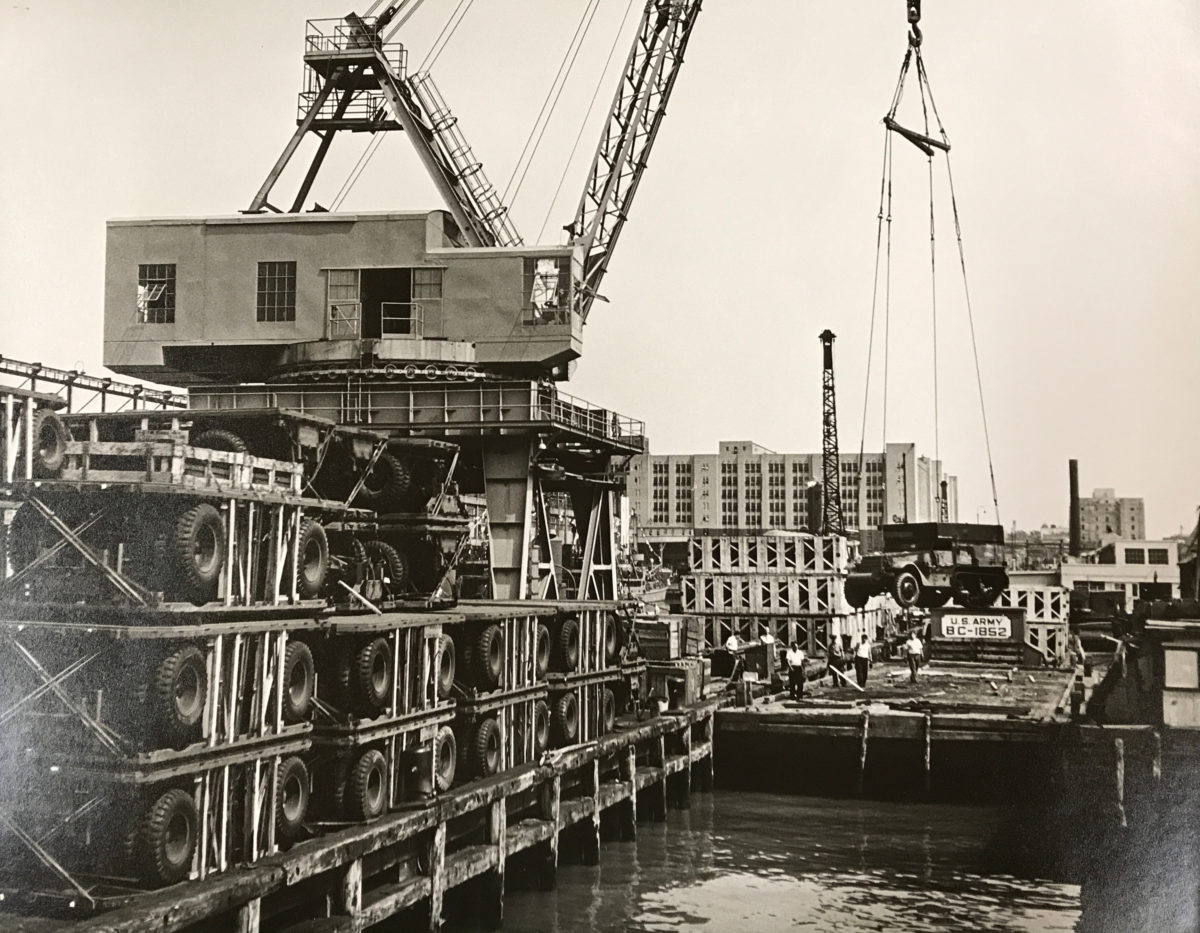
At this point, Operation Magnet nearly collided with another operation that was just getting underway: Drumbeat, the German U-boat assault on the American coast. On the night of January 14, the submarine U-123 approached the Rockaway Peninsula, and early the following morning, it sunk the British tanker Coimbra 27 miles off the Hamptons. Two ships that would provide convoy protection, destroyers USS Myrant and USS Rowan, were diverted to search for survivors; just 10 of the complement of 46 survived.
Luckily, U-123 did not cross paths with AT-10, but the massive resources deployed to protect this convoy – 17 destroyers (out of 21 total on the Atlantic coast), three cruisers, battleship USS Texas, and aircraft carrier USS Wasp – is what allowed U-123 and its commander Reinhard Hardegen to run wild without fear of attack from the US Navy, sinking eight ships and killing 250 sailors in just seven weeks.
While free from U-boat attacks (though two unknown sonar contacts were made and depth charges dropped), the journey was still a rocky one across the North Atlantic in the dead of winter. The 34th’s history complains especially of the food aboard the British Strathaird: “The men grew ill by the hundreds on the English diet of constant fish and mutton, augmented by the illness of the sea.”
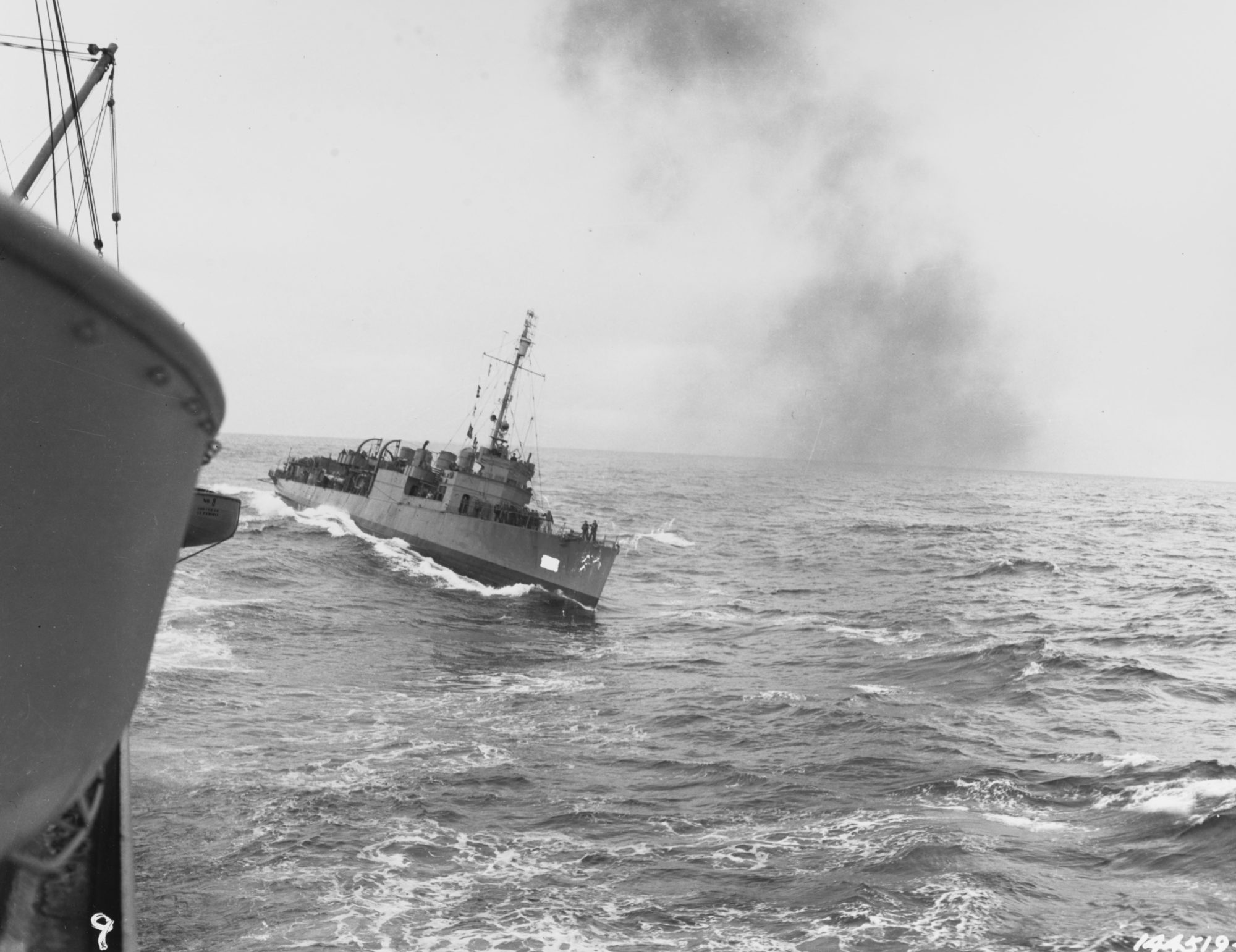
As the convoy approached the Irish coast on January 26, the first message the Americans received came from Capt. N.V. Dickinson, commander of the British corvettes protecting them: “See Acts 27, Verse 22, for ‘but only,’ read ‘nor’,” which translates to: “And now I exhort you to be of good cheer. For there shall be no loss of any man’s life among you, NOR of the ship.” To this 34th commander Maj. Gen. Russell P. Hartle responded: “Psalms 107, verses 23 to 30.”
“They that go down to the sea in ships, that do business in great waters; These see the works of the Lord, and his wonders in the deep. For he commandeth, and raiseth the stormy wind, which lifteth up the waves thereof. They mount up to the heaven, they go down again to the depths: their soul is melted because of trouble. They reel to and fro, and stagger like a drunken man, and are at their wit’s end. Then they cry unto the Lord in their trouble, and he bringeth them out of their distresses. He maketh the storm a calm, so that the waves thereof are still. Then are they glad because they be quiet; so he bringeth them unto their desired haven.”
Once they docked in Belfast, credit for being the first American to disembark on foreign soil in a combat zone during World War II goes to Private Milburn H. Henke of Hutchinson, Minnesota (most of the 34th was made up of men from Minnesota, Iowa, and the Dakotas), though this was really a publicity stunt, as over 500 men had disembarked before Pvt. Henke, who was picked at random to be the face of the operation. What awaited them was similar to what they had left in New Jersey: disorganization and lack of adequate housing. While the American press touted their arrival at a “powerful military base” that had been “under construction by American technicians for many months,” in reality they were scattered in small encampments of tents and temporary Nissen huts, with little space or equipment to train, and few materials or engineers to build an adequate base.
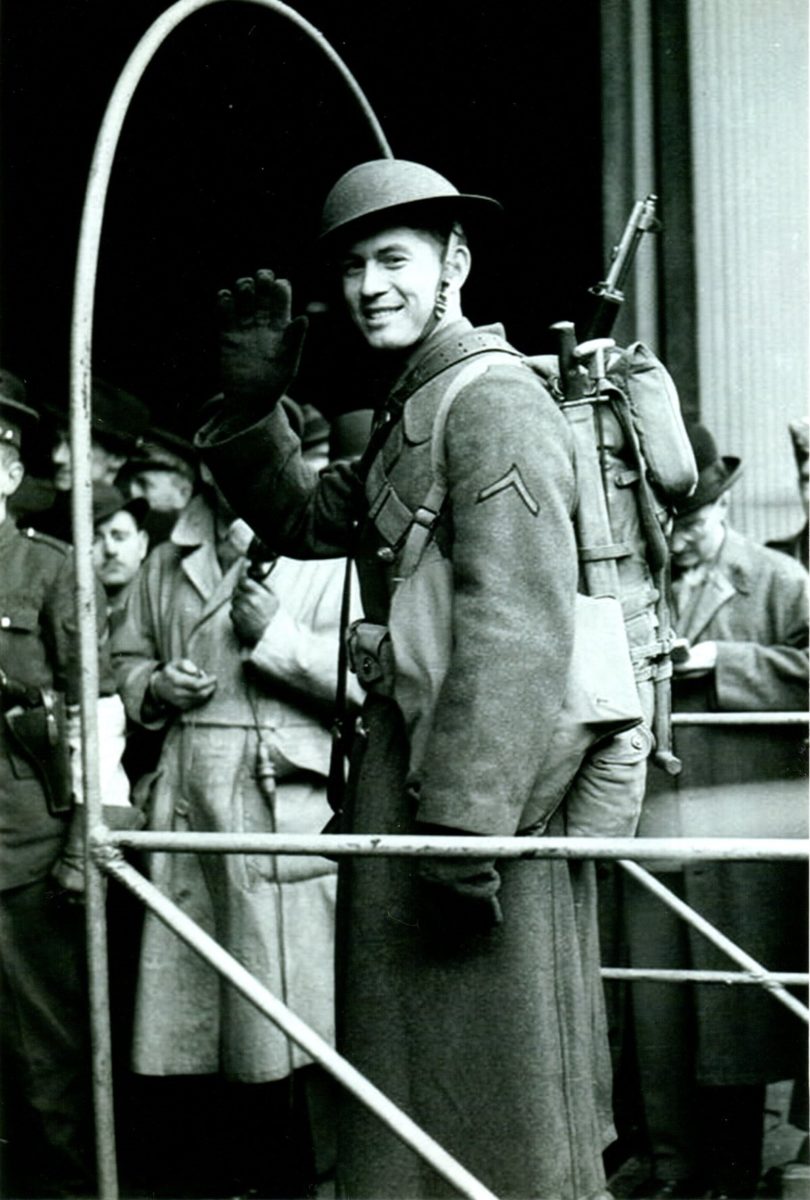
On February 19, another 7,000 troops for Operation Magnet departed Brooklyn, arriving on March 2, followed by the third contingent arriving May 10–13 with 13,942 men, and a finally the fourth contingent of 10,000 arrived aboard the Queen Mary on May 18, bringing the total strength to over 32,000.
The next stop for most of these men would be North Africa, as the 34th Infantry Division and the 1st Armored Division, which formed the core of Magnet, were deployed for Operation Torch in November 1942. By the end of the year, all American forces had left Northern Ireland, and they would not return until the next major buildup in late 1943: for Operation Overlord and D-Day.
While Operation Magnet did not run perfectly according to the war plans, it was an important show of force for our allies and adversaries, and a good stress test for American military logistics and operations. In some areas, we did well – convoy AT-10 was moved quickly and safely across the Atlantic – while in other areas, not so much. The New York Port of Embarkation was unable to deliver all of the equipment the force needed, and the severe shortage of destroyers left the American coast exposed to U-boat attacks. Despite the early challenges, this would be a first step in constructing a logistics chain from New York that would deliver more than 3.2 million soldiers to battlefronts across the globe.
UPDATE: As Facebook user Adrian Hack helpfully pointed out to us, some of the troops of the 34th Infantry got into the fight sooner than Operation Torch. This division would form the backbone of the 1st Ranger Battalion, with 80% of its first 600 soldiers coming from the 34th. Fifty of these men would get their first experience of combat on August 19, 1942 in the Dieppe Raid (though only 15 made it ashore in the disastrous operation, and three of them were killed, three wounded, and five taken prisoner). This history is commemorated at the US Rangers Centre and on guided walking tours in Carrickfergus, Northern Ireland.

